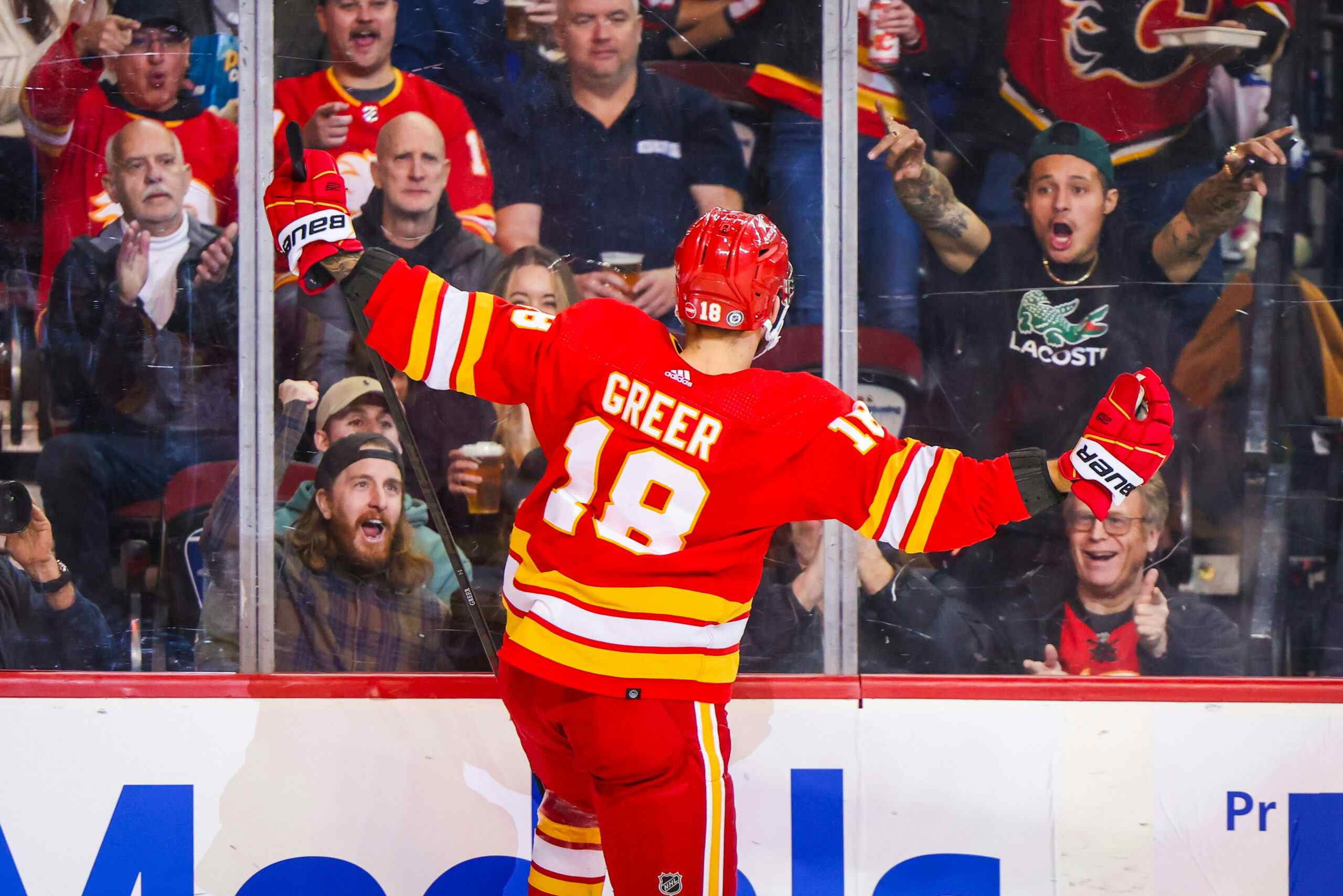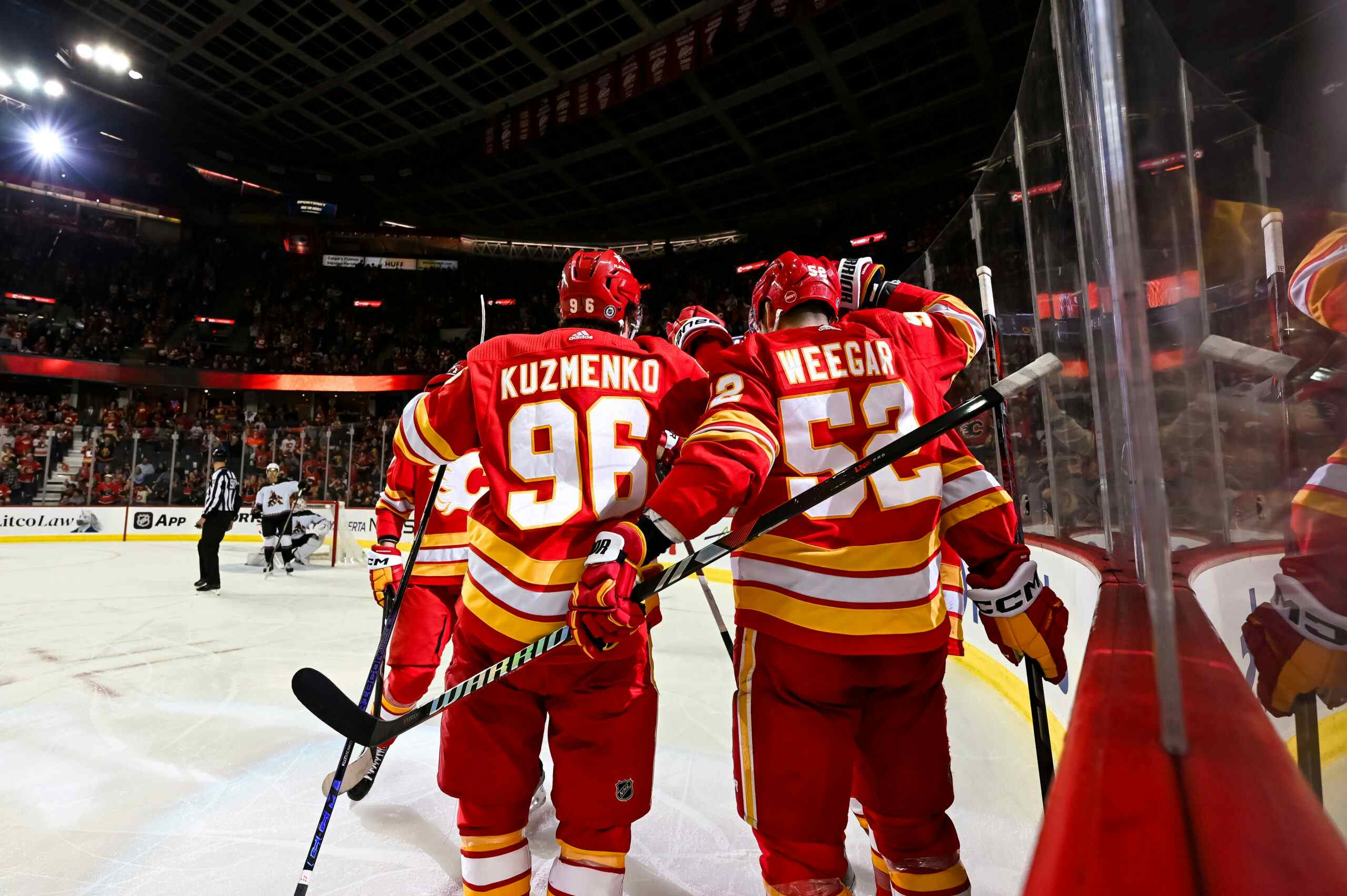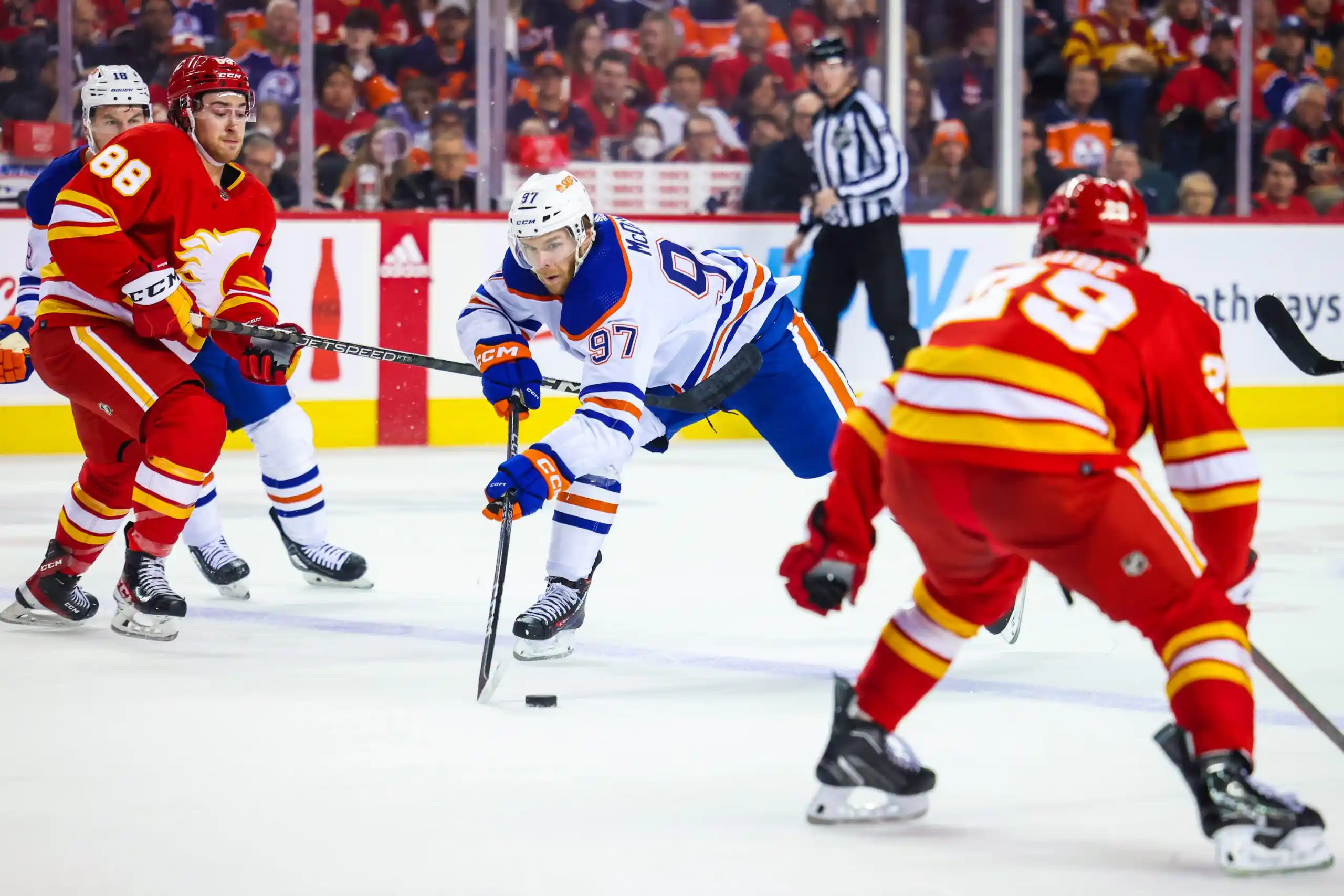A tale of two Deryk Engellands
By Ari Yanover
8 years agoWhen the Flames signed Deryk Engelland to a three-year, $8.75 million contract on July 1, 2014, the universal reaction seemed to be incredulousness.
With no offence to him intended: seriously? This was a then-32-year-old who would be defined as a goon more than anything else. He doesn’t really score, he doesn’t play big minutes, and he has more penalty minutes than anything else. All that, and he got a 500% raise out of nowhere. It was bizarre.
It’s a tough cap hit to live up to, but by no means is it Engelland’s fault; if any of us were offered that amount of money, we’d sign that deal in a heartbeat, future perceptions of our value be damned. But while Engelland likely won’t escape the label of costing too much, it’s not all bad: his 2015-16 is going much better than his 2014-15.
It’s not ideal, but it’s liveable. Something changed between this season and last, and while the Flames have fallen in the standings, Engelland, at least, has been a bright spot.
Easier circumstances, less usage
There’s one way to have just about any player perform to his peak potential: have him play in circumstances meant for him. Last season, when Mark Giordano was injured, Engelland ended up playing in the top four alongside T.J. Brodie. That was not an ideal position for either player: Brodie was, at worst, a number two defenceman; while Engelland is, at best, a number five guy (and that’s a pretty generous best). Playing Engelland in such a prominent role was basically setting him up for failure.
This season, though, Engelland is playing on the bottom pairing. His ice time has dropped from 14:23 in 2014-15 to a career low 12:22 this season. His relative zone starts have gone up, too: last season, he was at -7.86%; this season, it’s a more manageable -3.25%. His possession has improved accordingly, as he’s gone from a 5v5 40.20% CF up to 45.71%.
Engelland is now being played in a role appropriate for his skill set. He’s not exactly thriving, but he’s been much improved since too much was asked of him the season before, and it’s made a very real on-ice difference. His GF60 has improved from 1.49 to 1.88; the Flames are scoring more with him on ice. His GA60 has dropped from 2.68 all the way down to 1.48; the Flames are giving up way fewer goals with him on the ice.
Just about everything about him that matters has improved. His personal scoring is down, but Engelland wasn’t signed to put up points. His main job is to keep pucks out of his own net (and be truculent, too, I suppose), and so far, this season has gone better than last.
Greater depth, better partners
When Giordano went down, the Flames had three options with which to replace him: Engelland, Raphael Diaz, or David Schlemko. Since Calgary acquired Dougie Hamilton over the off-season, any scenario such as that would not have to repeat itself; Hamilton is a capable, regular defender, and one much more suited to such a role than any of the other previous options.
This works in combination with the above section. It’s not that Brodie is a bad player to have as a partner; it’s that elevating Engelland into the top four was the problem. With more capable defencemen, though, that means better players are getting pushed down the lineup. For example, Dennis Wideman was a staple of the 2014-15 Flames’ top four; nowadays, he’s on the bottom pairing. That’s due to Hamilton providing the defence core with better depth.
Let’s compare just how drastic the change has been.

Engelland had pretty terrible numbers throughout the 2014-15 season, though none were worse than when he was elevated into the top four with Brodie. Diaz actually looks to have been the best partner for him, and his play didn’t even bring Diaz down as much as it did for all of his other regular partners from that season.

The sample sizes this season are smaller – Engelland has played over 200 5v5 minutes with Wideman, but only about 40-55 minutes with the others – and that does play a factor in assessing his overall improvement between seasons.
But however you slice it, there’s an improvement there. His 39.00% CF with Wideman isn’t much worse from how he performed with Ladislav Smid or Kris Russell the season before, and only noticeably trails Diaz.
Then there are his other partners. Engelland played 55:32 with Brett Kulak, and the two excelled with one another. He was a positive possession player alongside Hamilton and Smid as well; the reasons for his improvement alongside Smid this season as opposed to last are likely a combination of less ice time (42:41 compared to 220:17) and improved zone starts (52.2% this season, as opposed to last season’s 40.3%).
Hamilton and Engelland likely won’t find themselves in a partner situation again, but there still remains some intrigue with Kulak – especially considering how their time together came when the rest of the defence was a tire fire.
Managing the bad contracts on defence
There are basically three contracts on the backend the Flames could really do without:
- Dennis Wideman at a $5.25 million cap hit
- Ladislav Smid at a $3.5 million cap hit
- Deryk Engelland at a ~$2.917 cap hit
The good news is all three contracts will be off the books following 2016-17; the bad news is that’s still going to make it difficult to sign other players, particularly with Johnny Gaudreau and Sean Monahan’s new contracts coming up. The Flames want to retain Russell? That’s nice, but finding a way to fit him in under the cap may very well be impossible thanks to those three.
But of those three, Engelland’s deal may be the most manageable. For one thing, his contract is the cheapest; for another, he may be performing more optimally than the others. Smid is more in the pressbox than anywhere else, which is a lot of wasted money. Wideman had a career season in 2014-15, but his production has completely plummeted this year. He has the second highest cap hit on the entire team, and for him to be on the third pairing with that little production while costing that much is pretty much an inexcusable use of funds.
Recent articles from Ari Yanover





